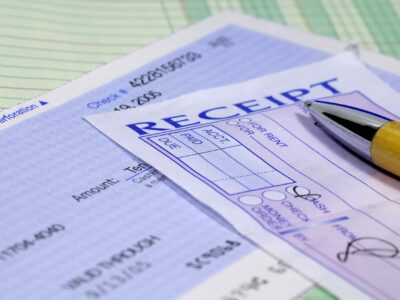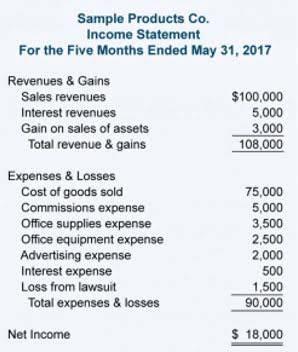Outstanding Shares Meaning, Formula, Types, Where To Find?

It will, therefore, miss shares that have been issued but are not outstanding, such as treasury stock. Fortunately, there are other ways to discover the entire stock picture of a corporation. A company may authorize buying back some of its own shares in the market if they believe that the market is undervaluing them and there is enough cash on the balance sheet to do so. In this case, the number of shares outstanding for the firm decreases. The number of shares outstanding can also be reduced via a reverse stock split. This potentially large range is the reason why a weighted average is used, as it ensures that financial calculations will be as accurate as possible in the event that the amount of a company’s shares changes over time.
Stock Splits
You can compare the differences between the figures on specific dates of the filings to find the change in outstanding shares. Companies may issue shares from time to time to fund growth or to reward executives and other insiders, so the number can vary from quarter to quarter. Similarly, companies may repurchase their own stock, reducing the https://www.instagram.com/bookstime_inc outstanding share count.
Thanks to the SEC, common stock outstanding is straightforward to calculate

The number of outstanding shares can also change if other financial instruments are turned into shares. An example of this is when employees of the company convert their employee stock options (ESO) into shares. Once you have collected the total number of preferred shares, common shares outstanding, and treasury shares, you’re ready to do your calculation. Explore how corporations authorize and calculate issued shares through market cap and balance sheet methods. Let’s say that Helpful Fool Company has repurchased 500 shares in this year’s buyback program. The company now has 5,000 authorized shares, 2,000 issued, 500 in treasury stock, and 1,500 outstanding.
How to Calculate the Weighted Average of Outstanding Shares
Conversely, a reverse stock split reduces the number of outstanding shares. Companies typically use reverse splits to increase their share price to meet minimum exchange listing requirements. Although this decreases liquidity due to fewer shares, how to calculate number of outstanding shares it can deter short sellers by making it harder to borrow shares for short selling. The profit and loss statements in nearly every corporate earnings press release will include both basic and diluted shares outstanding. The weighted average shares outstanding figure smooths out this variance, by simply averaging the share count across the reporting period.

How to Calculate Common Stock Outstanding From a Balance Sheet
- You can also find information on a company’s total outstanding shares by searching the Electronic Data Gathering, Analysis, and Retrieval System (EDGAR), which is operated by the Securities & Exchange Commission (SEC).
- You’ll find the number of common and preferred stock issued under the shareholders’ equity section.
- The outstanding stock is equal to the issued stock minus the treasury stock.
- This adjustment is made if the split or dividend occurs during the year or even after the year-end.
Once you locate the line item for preferred stock, take note of the total number of preferred shares outstanding. There are a number of different types of stocks that companies issue. For PE ratio- Fluctuations in the PE ratio is given substantial importance when analyzing a company.

Outstanding shares are one of three classifications of the share count. Issued shares refer to those shares issued by the company over time — yet, unlike outstanding shares, the number of issued shares includes shares repurchased by the company and held as treasury stock. Potential investors in a company look at the EPS as an indicator of the company’s profitability and compare this metric with the EPS of other companies before making an https://www.bookstime.com/ investment decision. The next step is to find the treasury stock line item on the company’s balance sheet.

You’ll find the number of common and preferred stock issued under the shareholders’ equity section. Add the preferred shares outstanding to the common shares outstanding to get the total number of issued shares. Outstanding shares are those owned by stockholders, company officials, and investors in the public domain, including retail investors, institutional investors, and insiders. How to calculate outstanding shares Of these terms, the two that you need in order to determine the number of outstanding shares are issued shares, and treasury shares. Generally, both of these figures can be found on a company’s balance sheet. Outstanding shares impact a company’s market capitalization, which is calculated by multiplying the stock price by the number of outstanding shares.
Public reports in which companies list the total outstanding shares include a quarterly or annual report or a balance sheet. These reports often can be found on a company’s investor relations page. Warrants are instruments that give the holder a right to purchase more outstanding stock from the company’s treasury.
- “Expert verified” means that our Financial Review Board thoroughly evaluated the article for accuracy and clarity.
- Knowing the number of outstanding shares a company has issued, as well as the types of shares, is all part of making smart investment decisions.
- It’s important to note that outstanding shares do not include treasury stock, which are shares that were once owned by investors that a corporation has repurchased.
- Weighted average shares must be used when you want to find out how many common stock were in effect during a specific time frame.
- Knowing a company’s number of shares outstanding is key when calculating critical financial metrics and determining share value as a portion of ownership.
- If the company has not bought back shares from investors and does not have treasury shares, this line item won’t show up on the balance sheet.
Issued Vs. Outstanding Vs. Authorized
Authorized shares are the maximum number of shares a company can issue, as specified in its corporate charter. Outstanding shares are the shares that have been issued and are currently held by investors. Most notably, short interest usually is measured as a percentage of the float, rather than shares outstanding. This is because short sellers, when choosing to cover, can only buy the shares actually in the float.

Leave a Reply